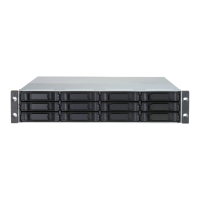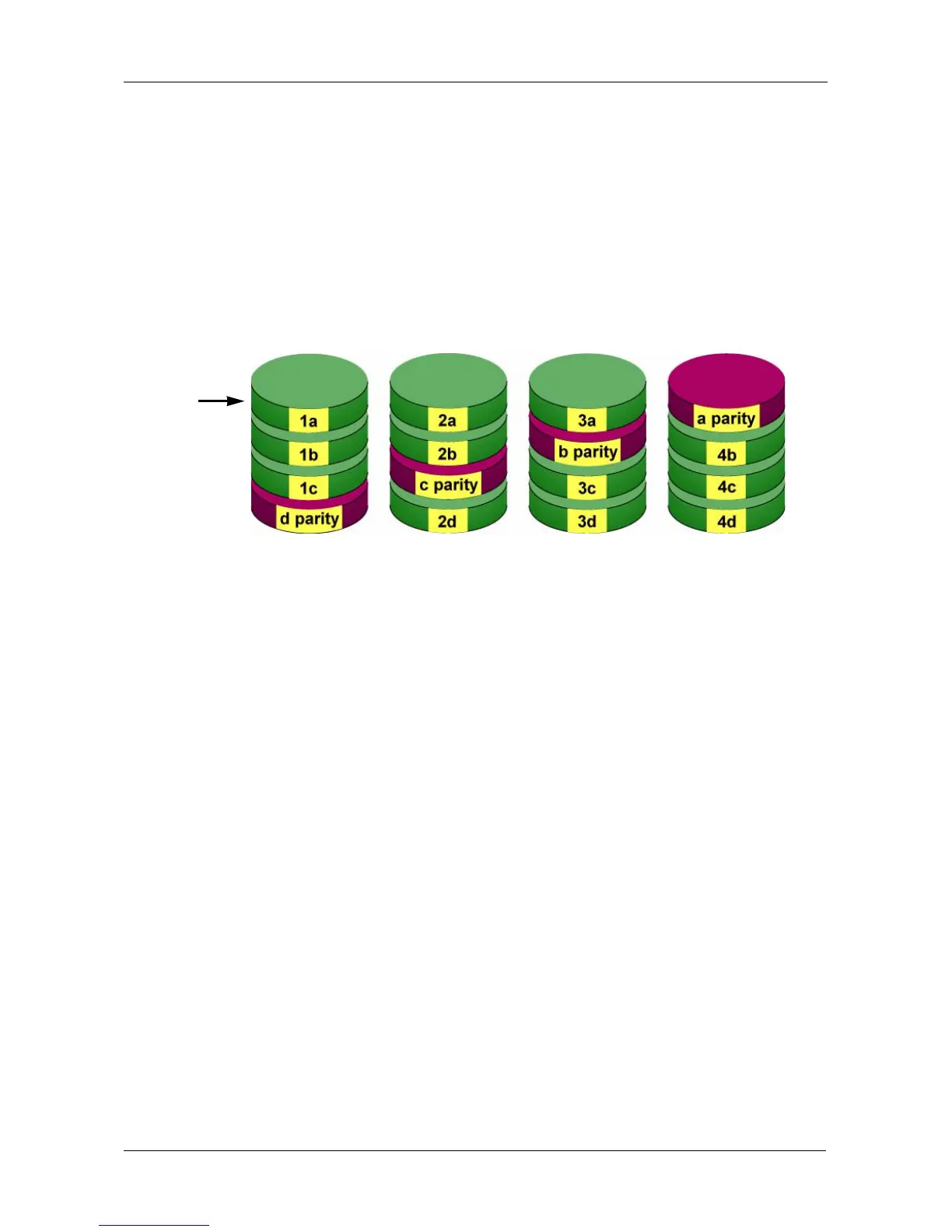Chapter 8: Technology Background
249
RAID 5 – Block and Parity Stripe
RAID 5 organizes block data and parity data across the physical drives.
Generally, RAID Level 5 tends to exhibit lower random write performance due to
the heavy workload of parity recalculation for each I/O. RAID 5 is generally
considered to be the most versatile RAID level. It works well for file, database,
application and web servers.
Figure 4. RAID 5 stripes all drives with data and parity information
The capacity of a RAID 5 logical drive equals the smallest physical drive times
the number of physical drives, minus one. Hence, a RAID 5 logical drive with four
100 GB physical drives will have a capacity of 300 GB. A RAID 5 logical drive
with two 120 GB physical drives and one 100 GB physical drive will have a
capacity of 200 GB.
RAID 5 is generally considered to be the most versatile RAID level.
A RAID 5 on VessRAID consists of 3 to 16 physical drives.
Data
Blocks
Distributed Parity
Physical Drives

